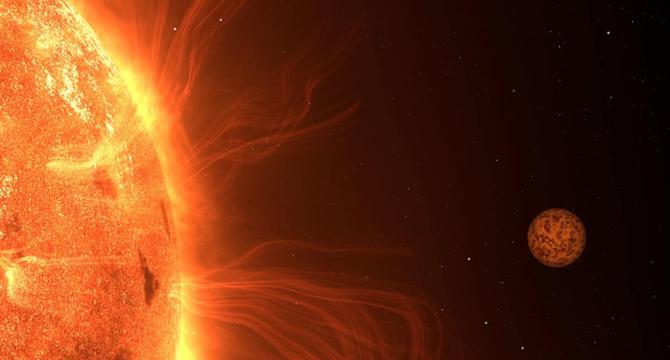Physicsworld
7d
16

Image Credit: Physicsworld
The enigma of Trappist-1 b: a thick atmosphere or airless rock?
- Recent observations by the James Webb Space Telescope suggest that Trappist-1 b could be either an airless rock or shrouded in a hazy CO2 atmosphere.
- The research provides thermal emission measurements for Trappist-1 b, presenting contradictory scenarios that challenge atmospheric models.
- One scenario suggests Trappist-1 b is an airless rocky planet with a young ultramafic surface due to strong tidal interactions and volcanic activity.
- Alternatively, the exoplanet could have a haze-rich CO2 atmosphere with a thermal inversion, as observed at 15µm.
- The presence of photochemical haze on Trappist-1 b is proposed to be due to hydrogen sulphide from volcanic activity, influenced by space weathering.
- The contradictory models pose an enigma about Trappist-1 b's true nature, which requires additional measurements for clarification.
- Further observations with broader spectral coverage and higher resolution spectroscopy are recommended to resolve the planetary paradox.
- JWST's findings emphasize the need for more data to distinguish between an airless surface and a CO2-rich atmosphere on Trappist-1 b.
- Co-author Gillon underscores the significance of acquiring additional data to differentiate between the two proposed models.
- TRAPPIST-1 b remains a mystery, with potential scenarios of being either a barren rock world or enveloped in a dense CO2 atmosphere.
Read Full Article
Like
For uninterrupted reading, download the app